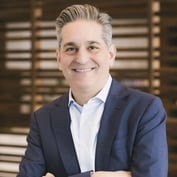Another Challenge When Working With Seniors: Their Children
By
Even though many advisors have built trusted relationships with their senior clients, many have started to see these seniors bring in other family members to help make difficult decisions about their financial plans.
“While they know and trust us, they want some third-party confirmation in addition to their advisor,” says David Bryant, an agent with Farmers Financial Solutions, Tulsa, Okla.
Bryant adds that some senior clients are bringing in their friends, their children or even their nieces and nephews. “We have people coming in saying that their nephew reads the business section of the newspaper every day and they want him involved in their investment decision,” he says.
Advisors agree that when clients bring in other family members it can present a number of different challenges. In some instances, when a client brings in an adult child to help make investment decisions, the child has a different objective than the parent.
“Ive seen this frequently; the children have a different agenda,” says James Jacobs, a financial advisor with Jacobs Financial Group, Chesterfield, Va.
In these situations, the senior may have a large retirement account that needs to be tapped for income purposes. The younger generation sees this account value as a potential inheritance and is concerned that his or her parents will spend it all during their retirement, Jacobs explains.
“They [the children] want the account to grow and accumulate while the senior citizen wants income with more guarantees,” he says.
Jacobs adds that the challenge hes faced in this situation is educating the children as to why he is recommending certain actions over other alternatives and where it all fits into the financial plan.
“Not only do you have to advise, educate and build rapport with your client, but you have to educate and build rapport with someone who you may not have a history with,” adds Bryant.
Planners have had both good and bad experiences when working under these circumstances. Bryant has had situations where people have full and complete confidence in him, but hes also had instances where people have taken their business to someone else.
In one situation, Jacobs senior clients asked him to speak with their daughter about their financial planning. “She called me on the phone and she was very adversarial,” he says.








 November 09, 2003 at 07:00 PM
November 09, 2003 at 07:00 PM










